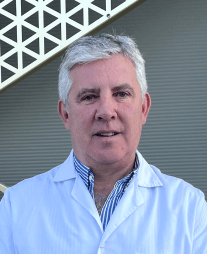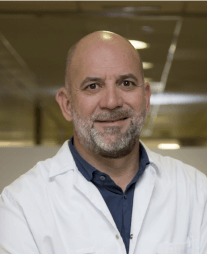Type 2 diabetes is one of the contemporary diseases most closely linked to eating habits. This is how Clotilde Vázquez, director of the Department of Endocrinology and Nutrition of the Fundación Jiménez Díaz University Hospital (Madrid) explains it: “There is a genetic component, yes, but the decisive thing is the amount of adipose tissue, fat, that we have. It depends on the diet. In 80% of cases of type 2 diabetes, patients are overweight or obese”, she summarizes.
“The prevalence of 13% is the tip of the iceberg. If we count undiagnosed and pre-diabetic patients, the figure could double”
Clotilde Vázquez Director of the Department of Endocrinology and Nutrition of the Fundación Jiménez Díaz University Hospital (Madrid)
There are multiple variants of diabetes, but type 2 is hegemonic: it represents almost 95% of total cases. “We are experiencing a spectacular increase in the world,” continues Vázquez. “It’s a plague and it’s starting to affect the young population.” The prevalence of the pathology is 13%, according to the latest studies, but this figure is only “the tip of the iceberg”: “There are diabetics with few symptoms, others without a diagnosis and prediabetics who have a cardiovascular risk, which could double the figure”, estimates the doctor.
In general, type 2 diabetes occurs because insulin, a pancreatic substance that allows us to process glucose and obtain energy, “is produced late and regularly, and this molecule is not recognized by our cells”, explains Vázquez: “In general, this happens because the adipose tissue interacts with the insulin and interrupts its effect. Suddenly it is as if that lock, which must let the sugar pass, becomes oxidized. This is what is called insulin resistance.”
Differences between type 1 and type 2 diabetes
Prevalence
Type 1
Infrequent. It represents between 5% and 10% of diabetes cases
Type 2
The majority variant. It accounts for 90-95% of all diabetes cases
Cause
Type 1
An autoimmune disease “attacks” insulin-producing cells and makes their function impossible
Type 2
It is multifactorial. It is associated with insulin resistance, insufficient insulin production and unhealthy lifestyle habits.
Initial age
Type 1
It is usually diagnosed in children and adolescents
Type 2
It is more common in adulthood, although bad eating habits cause more and more children to suffer from it.
Risk factors
Type 1
Although it is not hereditary, there is a genetic component.
Type 2
Overweight and obesity, sedentary lifestyle and family history. There is also a certain family predisposition
Source: Own calculation based on consulted experts.
It is a disease that does not warn. “A diabetic can go years without showing symptoms, which contributes to underdiagnosis of the disease. In fact, many cases are detected when the patient is hospitalized for another reason,” explains Vázquez. For example, a person goes to the ophthalmologist and discovers a problem with the retina, retinopathy. And when further tests are performed, diabetes appears. “It also happens with angina, heart attacks or some kidney problems,” adds Vázquez.
Exactly, a recent analysis big data of Quironprevención, with more than five million data analyzed, demonstrates that including indicators such as insulin resistance and glycosylated hemoglobin in medical tests helps reduce this situation of underdiagnosis.
Good habits, the only way
Eat well. It is the unequivocal recipe for the prevention of type 2 diabetes, understands Rafael Palomares, director of the Endocrinology, Diabetes and Nutrition service of the Quirónsalud Córdoba Hospital: “Up to 70% of cases could be avoided with good habits, that is, with physical exercise, but above all with a healthy diet.” There are no mysteries here: vegetables, fruit, healthy fats… And I ban refined sugars and ultra-processed foods. The Mediterranean diet, specialists agree, is always a good reference.
These are the messages that support World Diabetes Day – celebrated in honor of Frederick Banting and Charles Best, the discoverers of insulin in 1922 – a day of awareness focused on the patient’s general well-being, not just glycemic control. “I have a lot of faith in young people,” underlines Dr. Vázquez. “It is indisputable that it is fashionable to be active and play sports. In future generations this is achieved, but what is not achieved is food. There is plenty for everyone to do.”
“If I see that I’m gaining weight and that my blood sugar is a little high, I don’t have to wait to go to the specialist.”

Raphael Palomares Head of the Endocrinology, Diabetes and Nutrition service at the Quirónsalud Córdoba Hospital
Population screening also contributes to this preventative work. In the case of type 2 diabetes, what is taken into consideration when selecting the target population are “family history and cardiovascular risk factors, such as hypertension, cholesterol or obesity,” says Palomares. Also age: «From 45-50 years old it is advisable to do a glucose test», he adds.
The general and daily recommendation is given by Palomares: “If I see that I am gaining weight and that my blood sugar is a little high, I don’t have to wait to go to the specialist. And clarify the rules to follow: what physical activity we can do according to our possibilities and how we can lose weight, if there is obesity, in a safe and healthy way.”
What solutions exist?
Uncontrolled type 2 diabetes increases the risk of suffering from cardiovascular problems such as myocardial infarction, angina or stroke by five to ten times, specialists calculate. “Until a few years ago, type 2 diabetes was treated with insulin and it worked well, but the problem is that these cardiovascular complications were not prevented and there was a risk of hypoglycemia,” explains Palomares. Today’s drugs, he continues, have made two advances: “They prevent these cardiovascular diseases and, furthermore, keep hypertension and weight at bay.”
“Diabetes can be operated on and it is an increasingly agile and simple operation. The patient is home within 48 hours”

Jorge Solano Head of the Advanced Laparoscopic Surgery Unit of the Quirónsalud University Hospital Zaragoza
There is another way, in addition to pharmacology, to treat some cases of type 2 diabetes: surgery which, in the words of Jorge Solano, director of the Advanced Laparoscopic Surgery unit at the Quirónsalud University Hospital in Zaragoza, “is still largely unknown”: “Diabetes can be operated on”, he explains, “and it is an increasingly agile and simple operation. The patient is home within 48 hours”.
The operation, called bariatric surgery, involves “modifying” the patient’s digestive system using a bypass: “It’s a kind of short circuit in the intestine. In this way we manage to divert the ingested food, which changes the behavior of the hormones that influence sugar regulation.” The success rate for this surgery is 83%, Solano estimates: “Moreover, 99% of patients who inject insulin stop doing so after the operation.” Other associated conditions, such as retinopathy, can be reversed.
Patients who want to undergo this operation, underlines the specialist, must satisfy two conditions: “The diabetes must be type 2 and there must be a certain degree of overweight, which is assessed if the body mass index is equal to or greater than 30. That is, they must gain approximately 15 kilos”.
The specialists consulted highlight the scientific ferment that exists today in the fight against diabetes. “Despite the increase in prevalence, we are innovating more than ever in treatments and know many more aspects of the disease that help us control it better,” says Vázquez. Solano closes by inviting optimism: “The long-term consequences of diabetes are serious, yes. Fortunately we are in a historical moment in medicine that allows us to prevent this from happening.”



